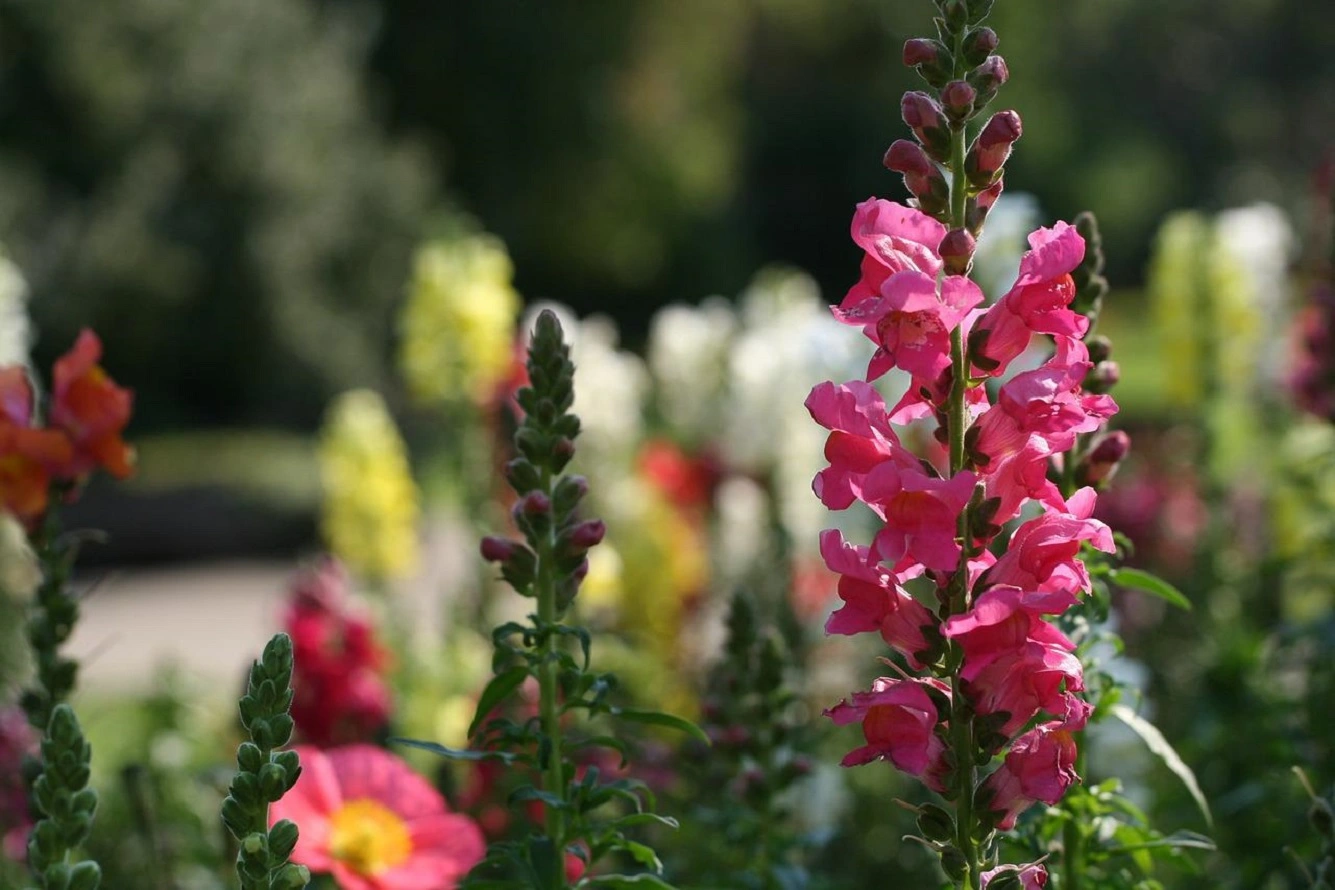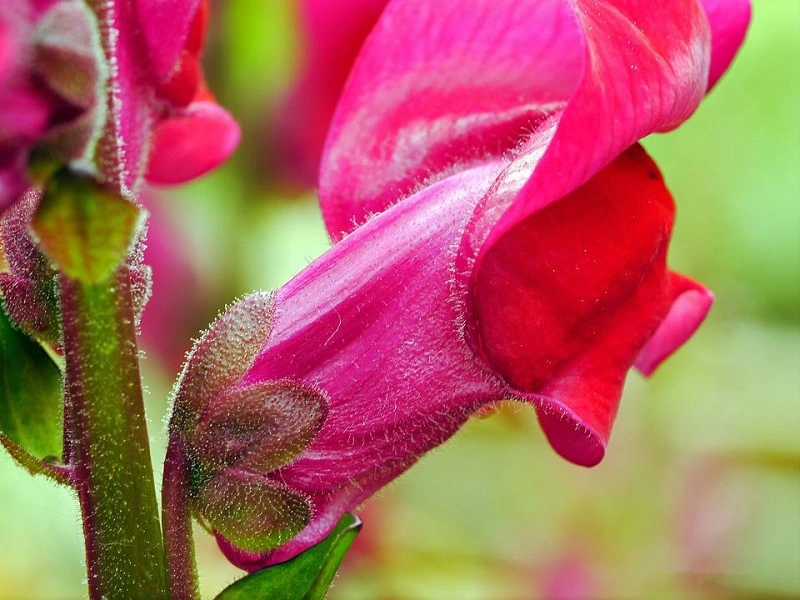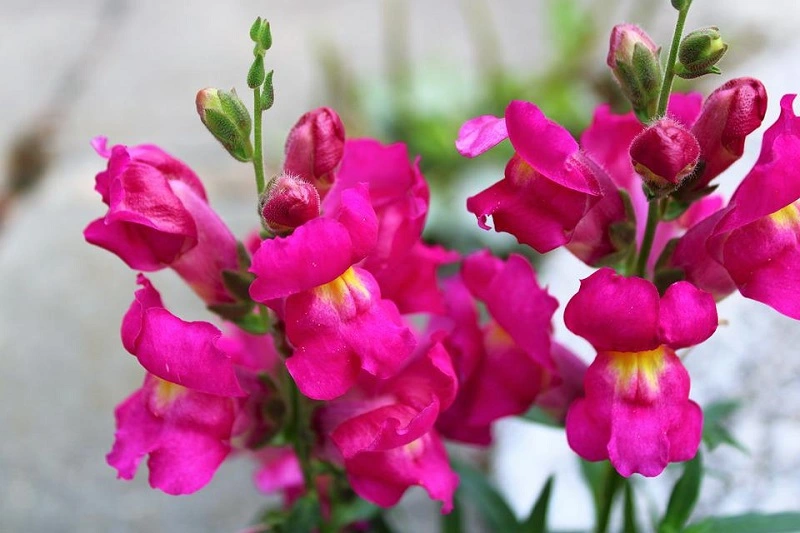Snapdragon Flower Plant Care - Bloom Time, Needs, Watering
Snapdragon is one of the plants that amaze with their stunning flowers and make the garden more colorful. Its seedlings are widely available and can be purchased in basically any flower shop. Because of its appearance and decorative properties, this plant commonly appears in yards, regardless of their sizes. Snapdragon flowers aren't difficult to take care of, so even a beginner gardener should be able to grow them.

Snapdragon – the plant’s origins and characteristics
Snapdragon, or Antirrhinum majus is a plant also known as dragon flower or dog flower. The plant is an annual from the plantain family. Because of their characteristic appearance and low requirements, snapdragons became a popular decorative element in many landscape designs. Depending on the variety, they can grow in low flowerbeds, as well as next to tall ornamental shrubs.
Snapdragon plant can reach various heights, which depends on the variety. On average, the plant is about 70 cm (2.3 ft) tall, but some types are either much taller or shorter. It’s a plant of straight habit and colorful flowers.

Snapdragon flower – the most popular varieties
Snapdragon is a plant of many varieties. The species is divided into plants that require protection and therefore are grown in containers, and hardier ones that can be planted in various types of soil. The most popular ground snapdragon varieties include:
- Antirrhinum majus ‘Ruby’ – it has dark-red flowers, the plant itself is bushy, of medium density,
- Snapdragon ‘Samurai’ – it produces pink flowers, the plant is bushy and dense.
- Dwarf snapdragon – it’s a low-growing variety with different colors of flowers, from white to red, yellow, pink, and orange.

What are the needs of snapdragon flowers?
Snapdragons are often picked by beginner gardeners, mostly because they are easy to grow and take care of. It’s a plant of few needs, thanks to which growing it is almost effortless. Note that snapdragons prefer soils of very good permeability. Sandy, humus-rich ground is the best option. The soil shouldn’t be overly dry, it’s good to keep it moderately wet. Snapdragon can endure moderately dry ground, though. When picking a spot for planting, remember about adequate sunlight. Snapdragon likes growing in full sun.
If you decide on this plant, remember that it doesn’t have to be planted directly in flowerbeds. Snapdragons can also grow in containers that can be placed indoors from January to April. Thanks to this, you can use them to decorate a patio or a balcony.
We recommend following the general plant care rules. Remove weeds around the snapdragons regularly. Flowers that finished blooming require deadheading – it strengthens the snapdragon plant and ensures longer blooming.

Does snapdragon need frequent watering?
Snapdragons require frequent and regular watering, especially when they are blooming. Water them moderately when not in bloom. The plant dislikes droughts, but the soil shouldn’t be excessively wet either, as standing water might cause harm and lead to root rot.
Snapdragon – do you need to fertilize the plant?
If you decide on this plant, you have to remember about fertilizing as well. Multi-ingredient products designed for blooming plants are the best option, as they provide all nutrients needed for flowering. Such nutritional products for plants can be purchased at any flower shop. They come in various forms, such as:
- water-soluble powders,
- liquids,
- sticks.

Snapdragon – propagation
Snapdragons can be propagated in two ways. The most popular one involves collecting and sowing the plant’s seeds. You can also purchase them in a store. If planning to harvest them from the plant, one should let the flowers dry after blooming, and collect the seedpods. You can store them until spring and then plant them.
The other method involves dividing the plant. It can be done successfully with fully mature plants. Delicately dig out the plant, and then divide it. Put the new flowers in the ground again, making sure they are at the same depth as previously.
Snapdragon plant – pests and diseases
Snapdragons might get attacked by pathogens. Snapdragon rust is the most common danger. The affected plant develops brown spots on its leaves. Antifungal products might help fight this problem. Attacked leaves should be removed, along with those that have died and fallen off.
Wrong soil or too intense watering is another danger to snapdragons. Impermeable ground and long-lasting moisture might cause the plant’s rot. If it happens, it’s difficult to save the plant.
Aphids are the most common pests attacking snapdragon plants. Fortunately, they are easy to get rid of. Just use adequate pest control remedies. Even those purchased in garden stores are very safe to the plants nowadays. Some products are eco-friendly, and they are highly recommended by experts because of their quality ingredients.

📍 What does a snapdragon flower look like?
Snapdragon is an annual plant. It has a bushy habit and lanceolate leaves. It can grow up to 90 cm (3 ft) tall. Upward flowers are the characteristic trait of this plant.
📍 When to plant snapdragons?
Snapdragons can be planted directly in the ground. It should be done between April and May. Seeds planted like this will bloom in August. The usual time from sowing to blooming is 10-12 weeks.
📍 How to plant snapdragons?
Snapdragons can be planted either as purchased seedlings or sown seeds. If you decide on seeds, plant them between April and May. Sow them onto the ground's surface and lightly press on them. Leave some space in between, from 15 to 40 cm (0.5-1.3 ft), depending on the variety.
📍 When do snapdragons bloom?
Snapdragons need 10-12 weeks to bloom if planted from seeds. When sown during the recommended time, the plant should bloom from the end of June until the end of August. You can also plant the seeds earlier in containers – this way, you can expect the snapdragons to flower sooner.
Featured articles




